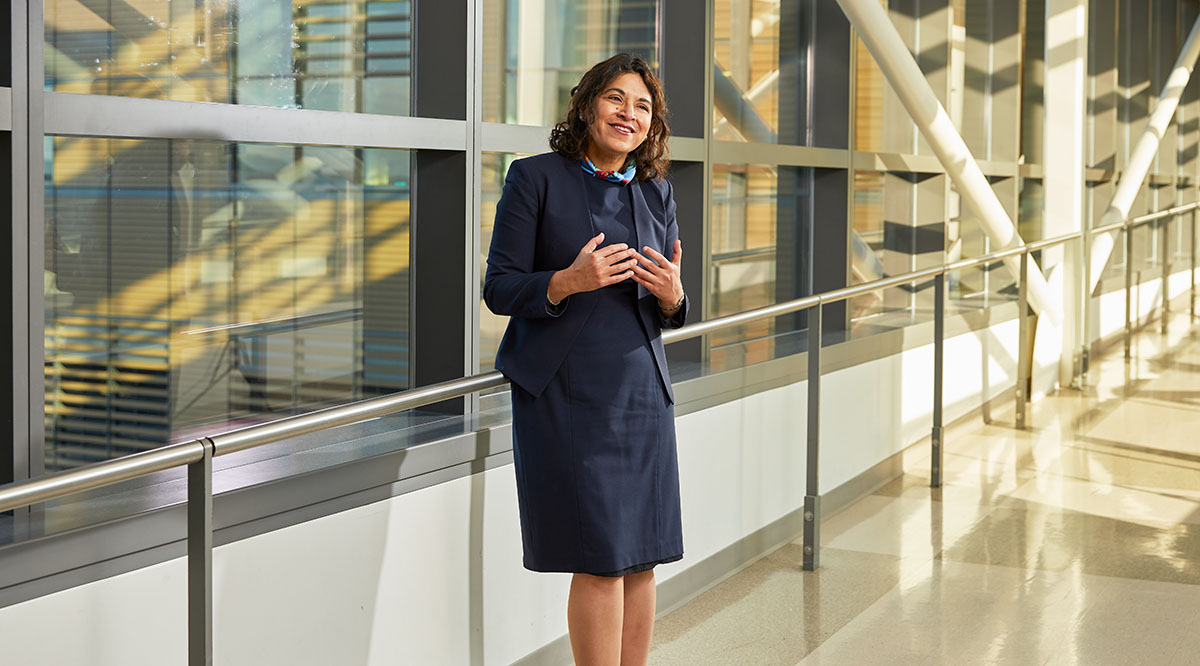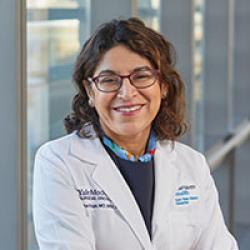
Editor's note: The opinions expressed by the author do not necessarily reflect the opinions of the AAMC or its members.
The coronavirus pandemic has disrupted every aspect of health care in the United States and has done so faster than most of us have ever experienced. However, while the crisis has revealed fundamental cracks in the public health infrastructure, it has also allowed us to imagine new realities for the academic mission and the ways in which we must advance patient care, education, and research in the future. The collective trauma of the coronavirus to our community brings with it a window of healing and synaptic adaptation.
In spring 2020, COVID-19 presented to the U.S. health system the biggest challenge of our lifetimes, not only because of its novel nature but also because it was an unprecedented change accelerator. The pace of the pandemic ushered in a new era of health care delivery and discovery almost overnight — a far cry from the incremental pace at which medical science typically advances. Moreover, not since the 1918 pandemic has the First World dealt with a novel virus at this scale. Literally everyone has been impacted: rich, poor, young, old, male, female. Suddenly, all eyes are on the health system.
The key will be to not take this period of rapid advancement and discovery for granted. By all expert accounts, this will not be the last pandemic we will encounter in the 21st century; without a vaccine for climate change and its environmental impacts on our health, there will be others. Amid rapid change, and under the spotlight, what aspects of academic medicine do we need to protect and what can we stand to let go? How can we leverage the times to fundamentally improve the ways our patients, youth, and communities view the medical sciences? And how can we provide better care to our patients and communities now and into the future?
Amid rapid change, and under the spotlight, what aspects of academic medicine do we need to protect and what can we stand to let go?
In the clinical domain, while the media heralded our front-line workers as heroes, the rapid onset of the virus also revealed stark inequities in our “sick-centric” system, not to mention the imminent health challenges — physical, mental, and economic — facing our most vulnerable populations. Those disparities continue to impact every aspect of the crisis, from exposure to information flow to access to care. Indeed, whether a vaccine is embraced by those most vulnerable to complications will likely determine the trajectory of the pandemic.
Without precedent for risk stratification and limited supplies (of personal protective equipment [PPE] and intensive care unit beds, among others), physicians and health care teams have been pressed to make difficult choices about what care can be delivered when, where, and to whom. Surgery for cancer patients suddenly became an ethical dialogue. (Philosophy in the operating room isn’t something we teach in medical school — yet.)
In some ways, the pandemic also highlighted the need for sorely overdue reform in medical education. We’re still teaching in a very 20th century way. Sure, we’ve made changes, we’ve adapted — but not fundamentally. We’re still in classrooms, teaching and learning by Socratic method and memorization. But just think about the exponential rate at which knowledge is being discovered, especially during this pandemic. Is that still a logical way of teaching?
Then there’s what we’re teaching. I don’t think I was ever taught in medical school about how a disruption in an ecological niche can cause a disease that can go from the gastrointestinal tract to the brain to the heart. And yet, we now know that the novel coronavirus can do all of that.
Clearly, there were situational disruptions in education caused by the pandemic. Medical students were taken off clinical rotations during that first phase to preserve PPE when we discovered that our supply chains were broken. Graduating trainees in surgical services missed out on the volume of complex case practice they expected (and, I would argue, needed!).
But many things also changed for the better. Meetings that used to be in-person are now routinely taken almost anywhere — allowing the flexibility to take a call from the car or to be home in time for dinner — and that has had a small but important positive impact on work-life integration. All of our interviews now take place virtually with little impact on decision-making (and huge travel savings to students). Telemedicine allows us to see patients in their homes, in their living rooms. It feels like that old-fashioned doctor’s visit, which is nice. The paradox of socially distanced quarantined life is how it has strengthened the patient-physician connection. In the dark and fear, we have found trust and faith; our patients revere us as front-line heroes.
But telemedicine, for all its convenience, doesn’t allow for the human connection. Even with vaccines, the role of the human touch in medicine remains a critical conversation in our digital health age: our patients crave it, our physicians crave it, our health care teams crave it. While we all need to stay socially distanced for now, I am not alone in longing for the day when we can resume those more intimate connections with our patients and colleagues.
The paradox of socially distanced quarantined life is how it has strengthened the patient-physician connection. In the dark and fear, we have found trust and faith; our patients revere us as front-line heroes.
On the research front, a lot of basic mechanistic research was shut down — much of that research has taken years. The true impact will not be known for a long time, not just on the research itself but also on the research workforce. People who are established will survive; others will take early retirement, and in leaving, will take with them decades of wisdom. The newest entrants to the field — the postdoctoral students who may have planned to get a job as a faculty member, but their universities have cut salaries or recruitment — may be lost to academic medicine forever. Some of those young people will leave research altogether and go into other careers.
On the other hand, COVID-19 research took off, and #science is trendy. Who knew that the public would get excited about polymerase chain reaction cycle numbers and thresholds? Or that messenger RNA would make for appropriate social media chatter? The potential to leverage this excitement in our medical school system is tremendous. Our infectious disease colleagues have always been our silent heroes — forgotten until we need them. Now they have captured the public imagination. Look at Dr. Fauci: He is the hero of our times. Science is no longer an abstraction; rather, it is cultural discourse in action and relevant to every single person.
Our responsibility as academic medical leaders is to ensure proactive, preventive health care delivery to our communities, but to do so effectively going forward will require much greater collaboration between governments and insurance companies. That will take time; first, we must talk about it — and now. With the beginning kernels of trust between some Americans and health care “heroes,” the time is now to break down preexisting barriers and take a boots-on-the-ground approach to creating a trusting partnership with our patient communities.
Not one of us has all the answers, but together, we can accelerate enormous positive change. That is also what the pandemic has shown us — that by working together, we can build a more contemporary and compassionate future for academic medicine.
As we emerge from the pandemic, medicine will be changed forever. Some changes are already apparent with the adoption of telemedicine, telework, and virtual meetings. Other changes will only become apparent over the next few years. There is an opportunity right now for each of us — clinicians, students, patients — to help design the future of medicine. The introduction of ethics to the medical school curriculum is just one idea; a grassroots community task force to assess and address the most vulnerable populations in every neighborhood is another.
Not one of us has all the answers, but together, we can accelerate enormous positive change. That is also what the pandemic has shown us — that by working together, we can build a more contemporary and compassionate future for academic medicine.
